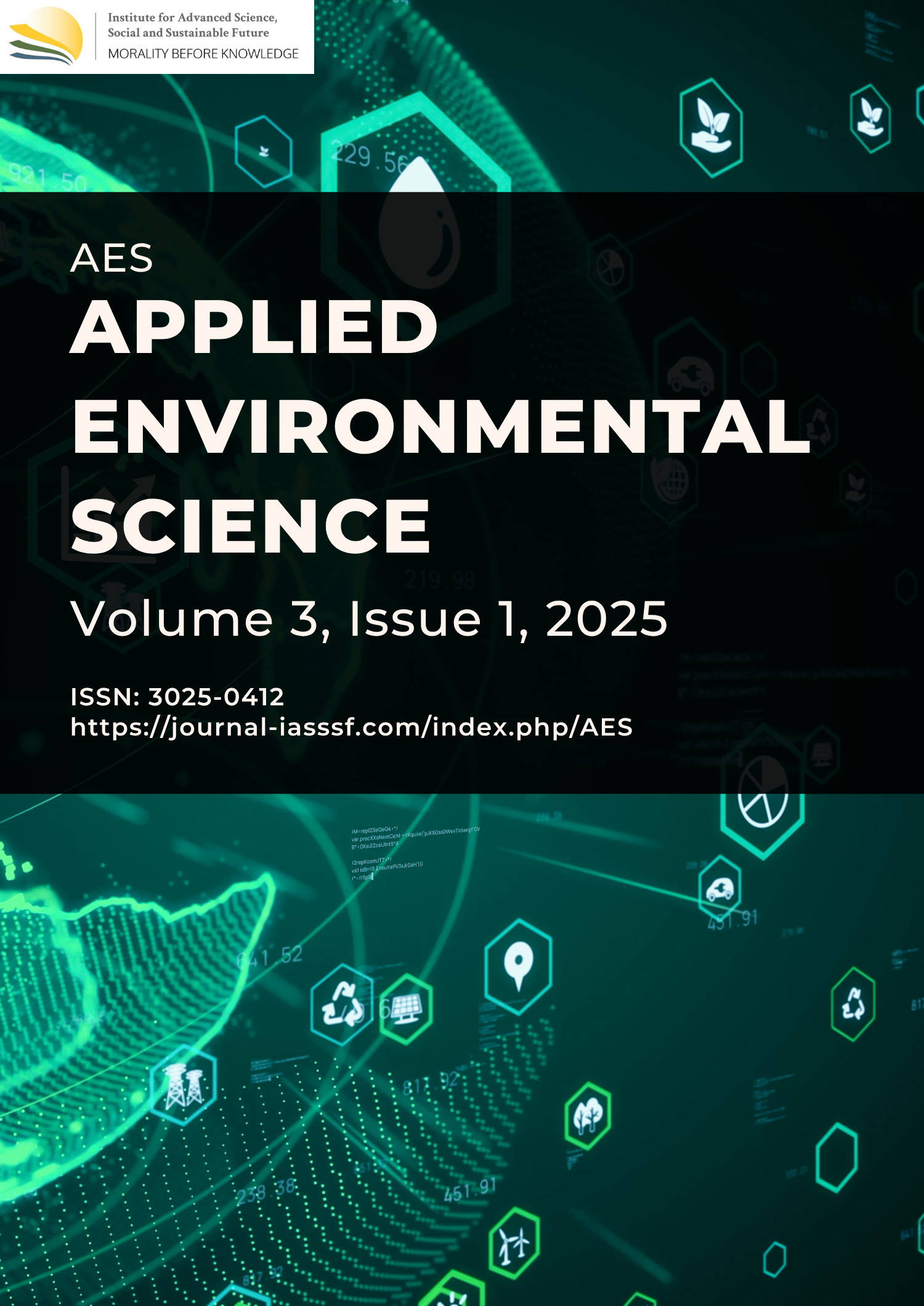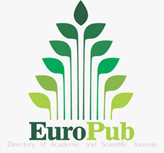Exploring resident perspectives and practical approaches to water quality maintenance in communal boarding facilities: Implications for public health and hygiene
DOI:
https://doi.org/10.61511/aes.v3i1.2025.1910Keywords:
hygiene practices, qualitative research, water qualityAbstract
Background: Water is a fundamental human resource, and ensuring its safety is essential for public health, especially in residential settings such as boarding houses. Water contamination can pose significant risks to residents’ well-being. This study focuses on exploring the water quality at a boarding house located on Bangka Street, South Jakarta, considering the importance of water clarity, taste, odor, and the infrastructure that supports water distribution. Methods: This research uses a descriptive qualitative approach, using semi-structured interviews and field observations. Data were collected directly from the boarding house owner and several residents to understand their perspectives and experiences regarding water usage and quality. Observations focused on water clarity, smell, taste, and the physical condition of the water infrastructure. Findings: The results show that the boarding house's water quality is generally clean, clear, and odorless—meeting national standards for safe water. However, an incident was reported in which excessive water use by a resident led to flooding and temporarily murky water. In response, the owner promptly drained the water tank and replaced outdated water pumps to restore water quality. These actions demonstrate the owner’s proactive maintenance and strong hygiene awareness. Conclusion: This study emphasizes the importance of regular water system monitoring, immediate responsiveness to water-related issues, and the collaboration between property managers and residents in maintaining water quality. Subjective perspectives reveal that a sense of shared responsibility and consistent maintenance are vital in ensuring access to clean and safe water in communal residential settings. Novelty/Originality of this article: This research contributes original insights into water quality management in small-scale residential environments. It highlights the value of community-level engagement and practical hygiene practices, combining lived experiences with public health standards to promote safe water access in boarding houses—a relatively underexplored area in academic literature.
References
Adams, H., Burlingame, G., Ikehata, K., Furatian, L., & Suffet, I. H. (Mel). (2022). The effect of pH on taste and odor production and control of drinking water. Journal of Water Supply: Research and Technology-Aqua, 71(11), 1278–1290. https://doi.org/10.2166/aqua.2022.133
Alvia, P., Nisrina, N., Aramdani, A. A., Putri, D. Y., Putri, S. A., Siregar, Y. S., & Sembiring, I. M. (2023). Sanitasi rumah kos dan perilaku hidup bersih sehat (PHBS) pada penghuni kos di Desa Tuntungan. Ecos Preneurs, 1(2), 129–135. https://doi.org/10.61492/ecos-preneurs.v1i2.64
Ardhianie, N., Daniel, D., Purwanto, P., & Kismartini, K. (2022). Jakarta water supply provision strategy based on supply and demand analysis. H2Open Journal, 5(2), 221–233. https://doi.org/10.2166/h2oj.2022.076
Arrojo, A. P. (2023). Human rights to safe drinking water and sanitation: Note by the Secretary-General (A/78/253). United Nations. https://digitallibrary.un.org/record/4019910
Ashillah, A. H., Zakianis, H., Kusnoputranto, H., Fitratunnisa, E. P., Fauzia, S., Lestari, F., Shaw, R., & Adiwibowo, A. (2025). Linking urban sustainability and water quality: Spatial analysis of topographic, sociodemographic, and flood-related factors affecting well water in Jakarta (2017–2019). Sustainability, 17(8), 3373. https://doi.org/10.3390/su17083373
Baballe, M. A. (2023). Review of the goals and benefits of monitoring water quality. Review of the Goals and Benefits of Monitoring Water Quality, 1(1), 1–5. https://doi.org/10.5281/zenodo.8099038
CDC. (2024a, September 4). Well water safety. Centers for Disease Control and Prevention. https://www.cdc.gov/drinking-water/safety/index.html
CDC. (2024b, November 4). Waterborne disease in the United States. Centers for Disease Control and Prevention. https://www.cdc.gov/healthy-water-data/waterborne-disease-in-us/index.html
Chalid, L. M. F., & Nastiti, A. (2025). Occurrence and health risk of phthalates in groundwater and surface water matrix: A case study of Kampung Daraulin, Citarum, Indonesia. Journal of Water, Sanitation and Hygiene for Development. https://doi.org/10.2166/washdev.2025.339
Farhany, F. F., Amalia, I., Rachmawati, M. B., Ernia, W., Rinonce, H. T., Kusumawati, H. I., & Muslichah, R. (2023). An overview of clean and healthy living behavior practices in the Islamic boarding-based education (Pondok Pesantren) environment. Journal of Community Empowerment for Health, 6(2), 87. https://doi.org/10.22146/jcoemph.77396
Genter, F., Putri, G. L., Handayani, R., Priadi, C., Willetts, J., & Foster, T. (2023). Evaluation of a participatory citizen approach to monitor microbial water quality of self-supply in urban Indonesia. Urban Water Journal, 21(3), 272–284. https://doi.org/10.1080/1573062X.2023.2285438
Judah, L. A., Andriambololonirina, C., Rakotoarisoa, L., John, L., Khaliq, M., Mihelcic, J. R., & Cunningham, J. A. (2024). Occurrence and mitigation of bacterial regrowth in stored household water in Eastern Coastal Madagascar. Water, 16(11), 1592. https://doi.org/10.3390/w16111592
Kasri, R. Y., Wirutomo, P., Kusnoputranto, H., & Moersidik, S. S. (2017). Citizen engagement to sustaining community-based rural water supply in Indonesia. International Journal of Development Issues, 16(3), 276–288. https://doi.org/10.1108/IJDI-03-2017-0031
Khairunnisa, M., Joko, T., & Raharjo, M. (2024). Drinking water facilities and hygiene behavior on the incidence of diarrhea in toddlers in North Jakarta City. Gema Lingkungan Kesehatan, 22(2), 28–34. https://doi.org/10.36568/gelinkes.v22i2.120
Khairunnisa, S. S. N., Yanidar, R., Marendra, S. M. P., Astuti, A. D., & Taki, H. M. (2025). The study of septic tank proximity on coliform, E. coli, and organic contamination in shallow groundwater: A case study of DKI Jakarta. Journal of Community Based Environmental Engineering and Management, 9(1), 53–62. https://doi.org/10.23969/jcbeem.v9i1.21644
Kimbell, L. K., LaMartina, E. L., Kappell, A. D., Huo, J., Wang, Y., Newton, R. J., & McNamara, P. J. (2021). Cast iron drinking water pipe biofilms support diverse microbial communities containing antibiotic resistance genes, metal resistance genes, and class 1 integrons. Environmental Science: Water Research & Technology, 7(3), 584–598. https://doi.org/10.1039/D0EW01059F
La Ibal, & Abubakar, E. (2023). Partisipasi masyarakat dalam program penyediaan air minum dan sanitasi berbasis masyarakat (PAMSIMAS) tahun 2022 di Desa Batu Putih Kabupaten Konawe Selatan. AJAD: Jurnal Pengabdian Kepada Masyarakat, 3(1). https://doi.org/10.59431/ajad.v3i1.150
Manga, M., Ngobi, T. G., Okeny, L., Acheng, P., Namakula, H., Kyaterekera, E., Nansubuga, I., & Kibwami, N. (2021). The effect of household storage tanks/vessels and user practices on the quality of water: A systematic review of literature. Environmental Systems Research, 10(1). https://doi.org/10.1186/s40068-021-00221-9
Maskun, M., Khalid, R. M., Mukarramah, A., Hamdani, N., Juniar, M. W., Wara, C., Erika, V., Nur, A., Kadir, A., & Muhammad. (2025). Legal analysis of reclaimed wastewater management in Indonesia: Reference to Malaysia and Singapore. Water, 17(10), 1416. https://doi.org/10.3390/w17101416
Ministry of Health of the Republic of Indonesia. (2017). Peraturan Menteri Kesehatan Republik Indonesia Nomor 32 Tahun 2017 tentang standar baku mutu kesehatan lingkungan dan persyaratan kesehatan air untuk keperluan higiene sanitasi, kolam renang, solus per aqua, dan pemandian umum. Kementerian Kesehatan Republik Indonesia. https://peraturan.bpk.go.id/Details/112092
National Human Rights Commission of Indonesia. (2015). Tujuan 6 – Human rights based development in Indonesia. Komisi Nasional Hak Asasi Manusia. https://sdg.komnasham.go.id/id/tujuan-6
Ofosu, B., Asante, A. K., Mensah, F. A., Usman, U.-F., & Ayeh, N. K. (2024). Investigation of groundwater quality with borehole depth in the Basin Granitoids of the Ashanti Region of Ghana. Journal of Water Resource and Protection, 16(5), 381–394. https://doi.org/10.4236/jwarp.2024.165021
Pramesti, D. S., & Puspikawati, S. I. (2020). Analysis of turbidity test bottled drinking water in Banyuwangi District. Preventif: Jurnal Kesehatan Masyarakat, 11(2), 75–85. https://doi.org/10.22487/preventif.v11i2.59
Satriani, S., Ilma, I. S., & Daniel, D. (2022). Trends of water, sanitation, and hygiene (WASH) research in Indonesia: A systematic review. International Journal of Environmental Research and Public Health, 19(3), 1617. https://doi.org/10.3390/ijerph19031617
Shah, A., Arjunan, A., Baroutaji, A., & Zakharova, J. (2023). A review of physicochemical and biological contaminants in drinking water and their impacts on human health. Water Science and Engineering, 16(4). https://doi.org/10.1016/j.wse.2023.04.003
Singh, M., & Yadav, D. R. (2022). Physico-chemical parameters for water quality check: A comprehensive review. ResearchGate, 9(4). https://doi.org/10.13140/RG.2.2.11070.25929
Świetlik, J., & Magnucka, M. (2023). Chemical and microbiological safety of drinking water in distribution networks made of plastic pipes. WIREs Water, 11(2), e1704. https://doi.org/10.1002/wat2.1704
UNICEF. (2022, February 7). Indonesia: Nearly 70 per cent of household drinking water sources contaminated by faecal waste. United Nations International Children’s Emergency Fund. https://www.unicef.org/indonesia/press-releases/indonesia-nearly-70-cent-household-drinking-water-sources-contaminated-faecal-waste
U.S. EPA. (2018, March 22). National primary drinking water regulations. U.S. Environmental Protection Agency. https://www.epa.gov/ground-water-and-drinking-water/national-primary-drinking-water-regulations
U.S. EPA. (2021, June 11). Factsheets on water quality parameters. U.S. Environmental Protection Agency. https://www.epa.gov/awma/factsheets-water-quality-parameters
Utama, N. Y. P. Y., & Ariyadi, R. (2022). Studi perencanaan perluasan SPAM jaringan perpipaan Desa Sambigede, Kecamatan Binangun, Kabupaten Blitar. Jurnal Daktilitas, 2(1), 18–30. https://doi.org/10.36563/daktilitas.v2i1.502
Water Quality Association. (2022). Perceptible water quality issues. https://wqa.org/learn-about-water/perceptible-issues
WHO. (2022, March 21). Guidelines for drinking-water quality: Fourth edition incorporating the first and second addenda. World Health Organization. https://www.who.int/publications/i/item/9789240045064
WHO. (2023, September 13). Drinking-water. World Health Organization. https://www.who.int/news-room/fact-sheets/detail/drinking-water
Zhu, Z., Xu, S., Pei, Y., Shan, L., Zheng, W., Bao, X., & Yuan, Y. (2023). Assessment of the microbiological safety of drinking water in outdoor pipe materials: Biofilm formation and chlorine resistance of typical bacteria. Environmental Science: Water Research & Technology, 9(6), 1738–1749. https://doi.org/10.1039/D2EW00853J
Downloads
Published
How to Cite
Issue
Section
Citation Check
License
Copyright (c) 2025 Jessica Mackenzie Wibowo, Jovanka Kanaya Widodo, Rena Anggraena Husain, Kayla Okta Kinder, Ferdy Anthonius, Markus Kurniawan

This work is licensed under a Creative Commons Attribution 4.0 International License.
















